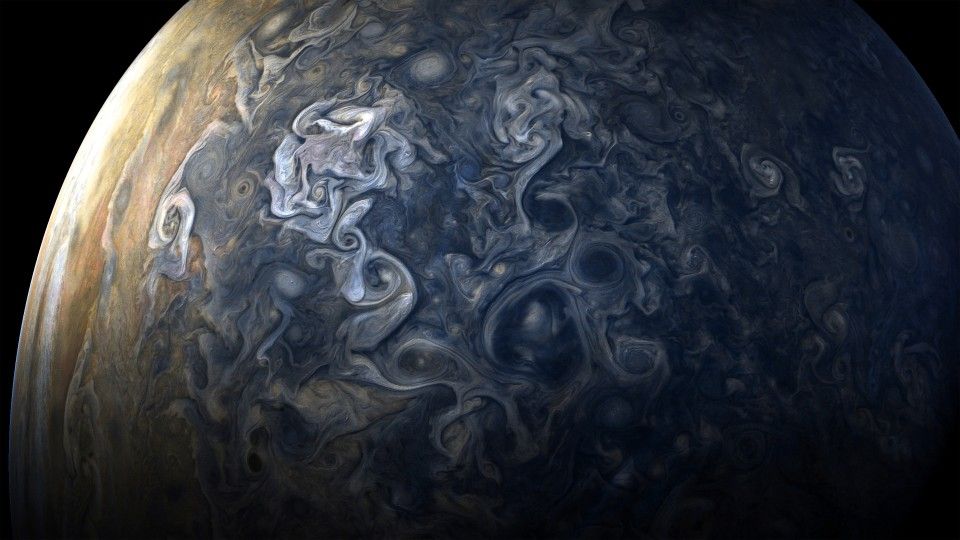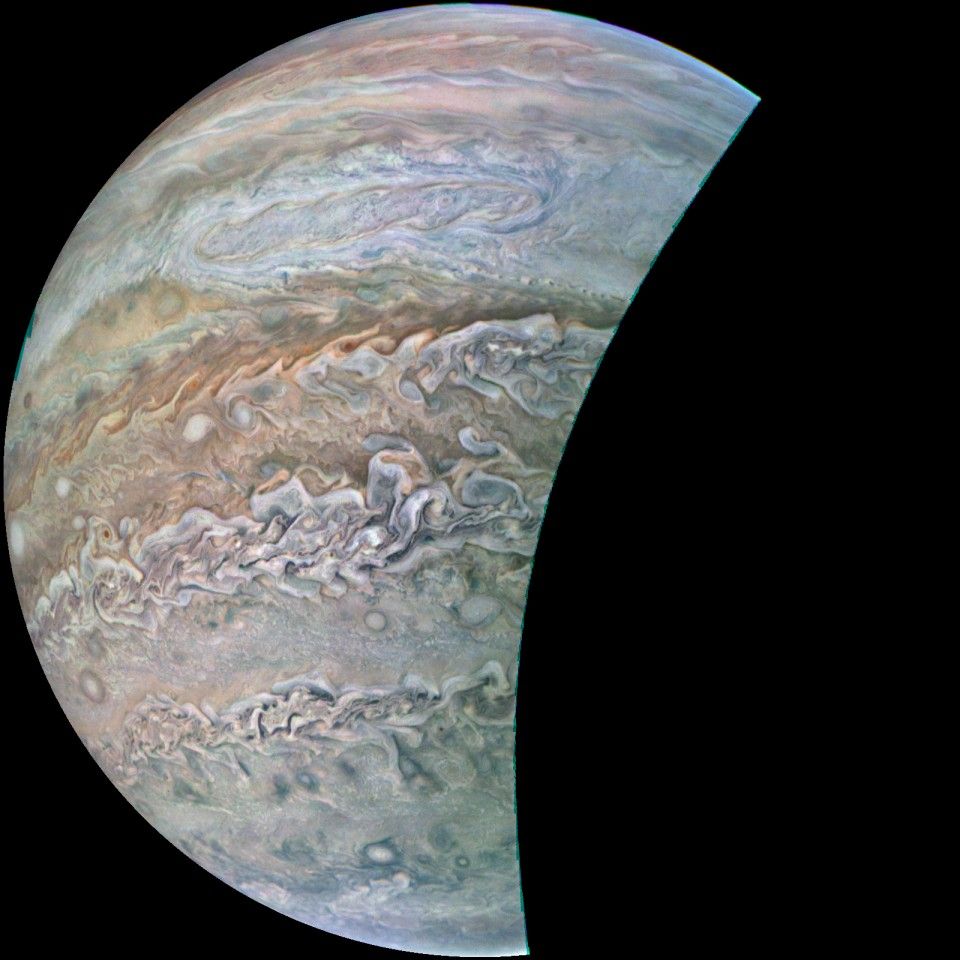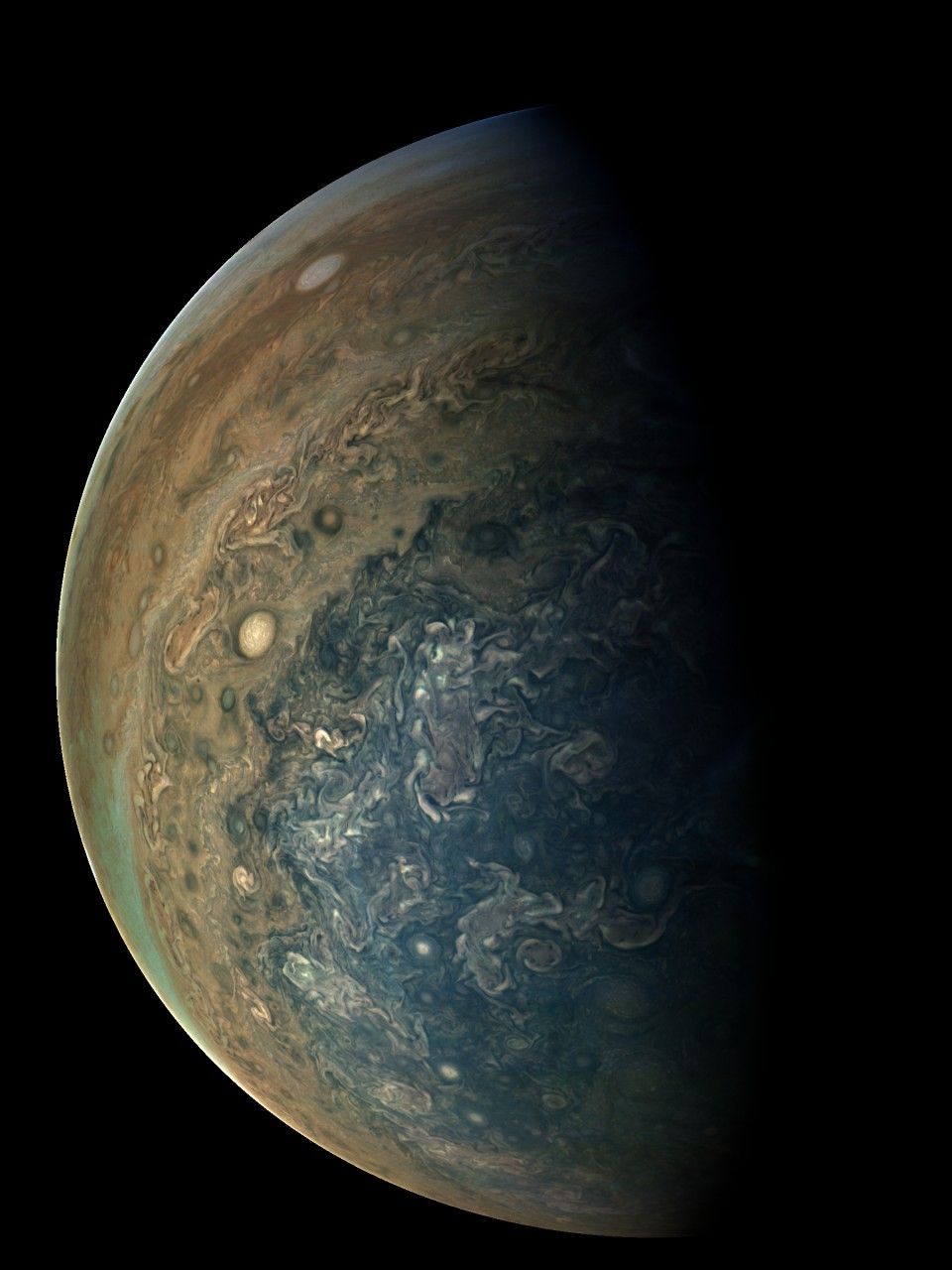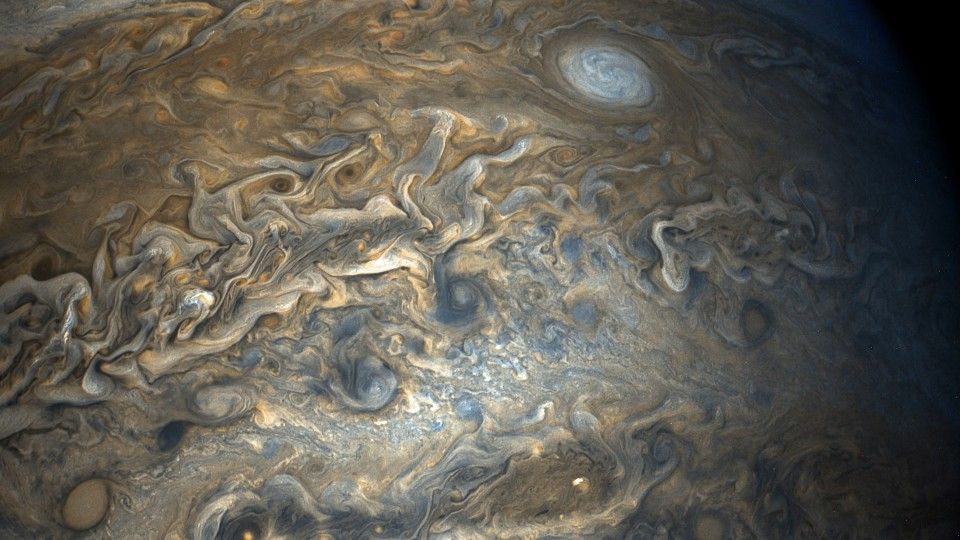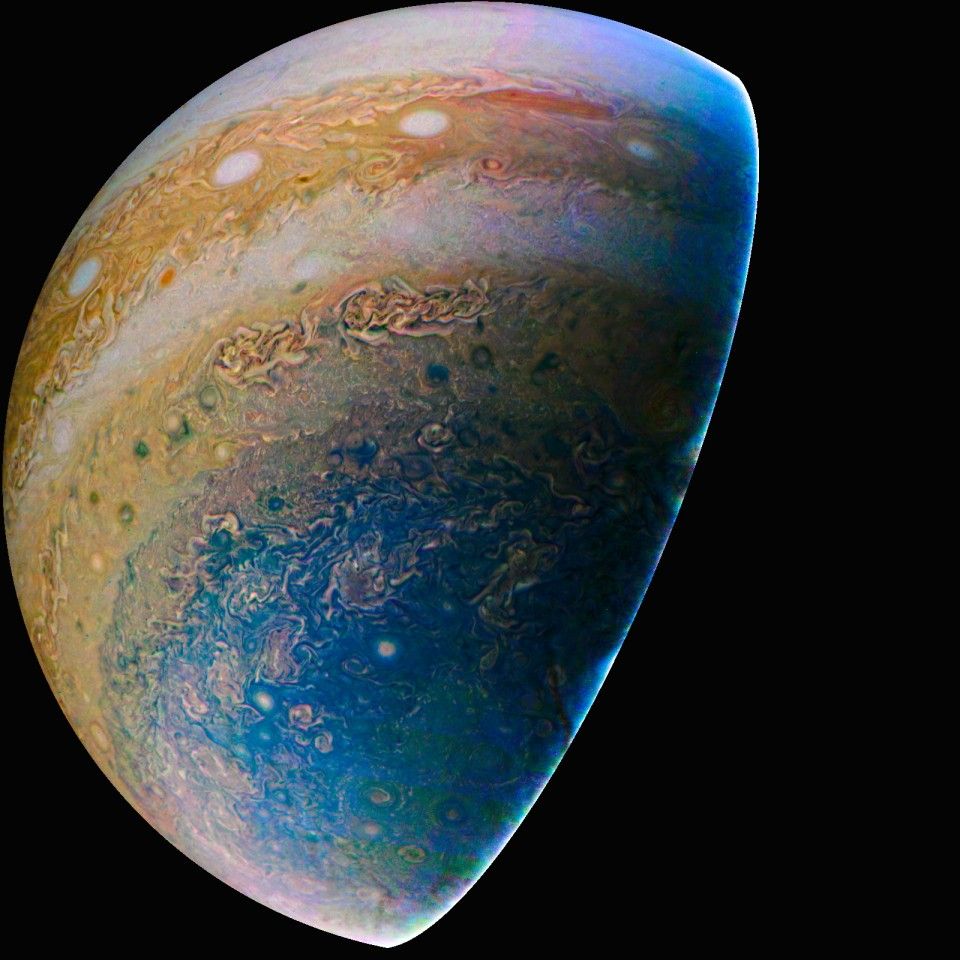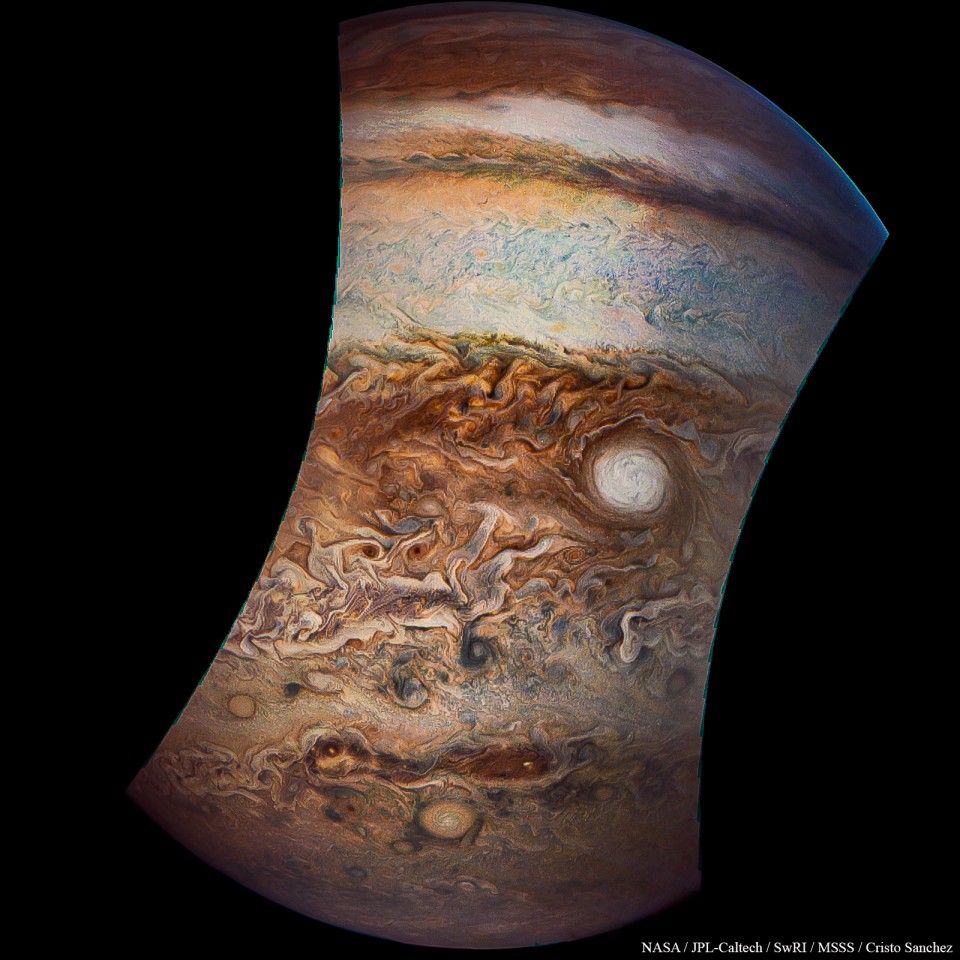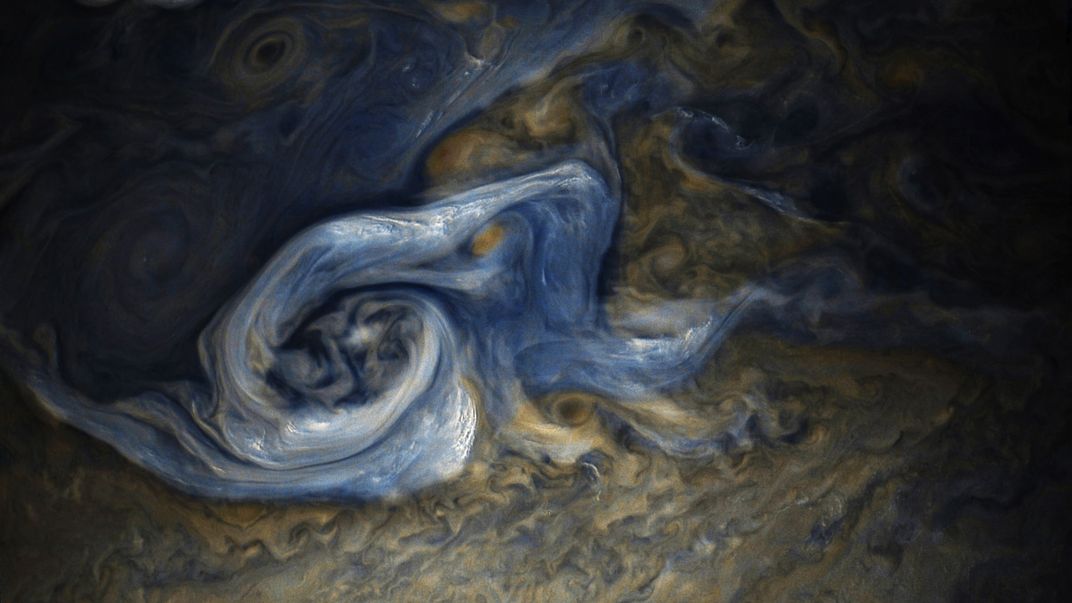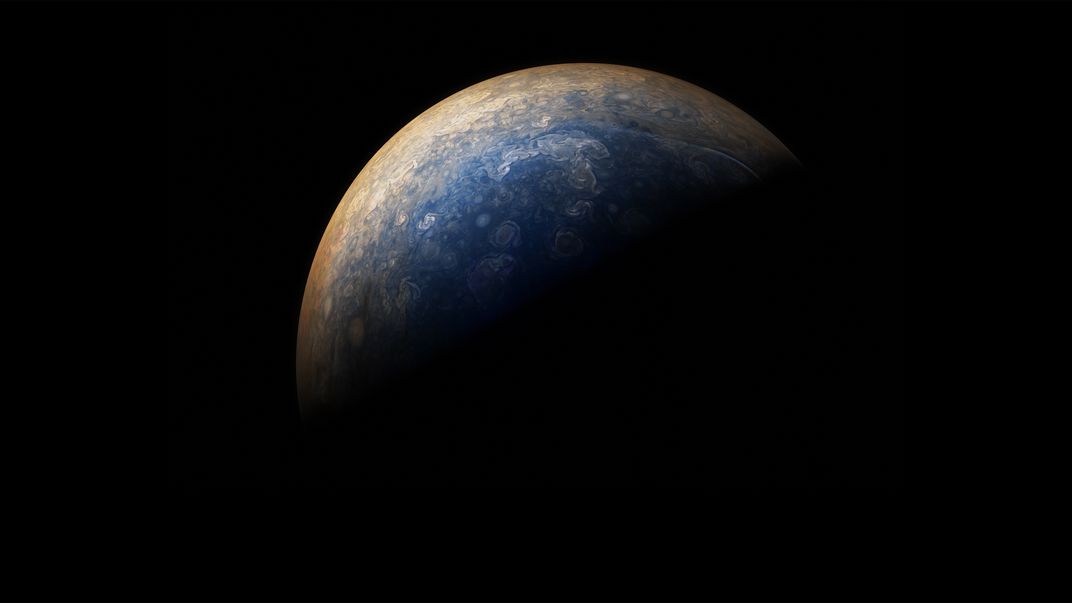Take in the Surreal Beauty of Jupiter in These Incredible New Images
NASA released the raw data earlier this week, allowing the public to process the beautiful images
On November 6th, NASA released the raw images from its Juno Probe’s 8th flyby of the solar system’s largest planet. The images are interesting, but on their own they're a little gray—and a little grainy. But as Meghan Bartels at Newsweek reports, a group of space photography enthusiasts are processing the data slowly but surely. And now, they have released some of the most incredible images of the gas giant yet, with NASA’s blessing.
When data comes back from a spacecraft, it often needs to be calibrated and corrected for things like camera angle, distortion, color and brightness. In the past, NASA scientists have processed raw images themselves. But the Juno Mission is taking a different approach, collaborating with the amateur space community to lend a hand with the processing.
This collaboration isn't limited to post-collection cleanup, NASA has also been working with an online community of astronomers to decide what parts of the planet to photograph, Erin Blakemore wrote for Smithsonian.com in 2015. This input was much more than a gimmick to get the public interested, Blakemore wrote. Between each close flyby of the Jovian giant, the craft swings far from the planet, making their views of the giant too small to distinguish features. By relying on ground-based observers, NASA can get a better idea of interesting features to pinpoint for the flyby.
As Bartels reports, the Juno team also handed over the processing of the raw images to the JunoCam Committee of space image amateurs. Any member of the public can download and process the images, and some have taken some artistic license, creating Monet-inspired images of the planet and psychedelic fractal-patterned versions of the Great Red Spot.
Other people processing the images, however, have been more faithful to the data, highlighting atmospheric features and attempting to emphasize the planet’s true colors. One dedicated processor is Seán Doran, who spent five hours processing 20 Juno images after the data came out. And the results are stunning and surreal.
“These images of Jupiter are not only awe-inspiring but also a little frightening,” Doran tells Rae Paoletta at Inverse. “The environment is so hostile and yet beautiful to behold. Our brains are not really wired to comprehend the vast expanses revealed with these intimate portraits returned by Juno—we need to abstract them.”
The images can be viewed on the Juno Mission website as they are uploaded. Juno will make a pass over Jupiter every 53 days until at least July 2018, when its mission ends, hopefully revealing more of the strange beauty of Earth's biggest brother.
